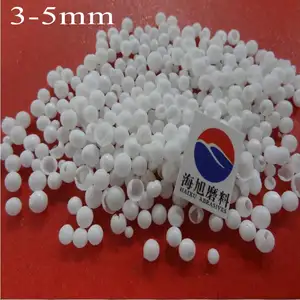

White Alumina Refractory White Corundum Hollow Ball Fused Alumina Bubble




















Bubble alumina stands as a premium refractory material, known for its high purity, mechanical strength, and thermal properties. Predominantly used in environments demanding high-temperature insulation and chemical stability, this lightweight alumina product is characterized by its low thermal conductivity and excellent insulating properties.
The versatility of bubble alumina is evident in its various forms, including granules, powders, and shaped bricks. Each type serves a specific function, from insulating linings in kilns to being integral components in the production of fire bricks. The spherical nature of bubble alumina enhances its insulating capabilities, making it a preferred choice for high-temperature applications.
The application of bubble alumina extends across multiple industries. In metallurgy, it's utilized for furnace linings due to its ability to withstand extreme temperatures. The ceramics industry employs bubble alumina in the creation of lightweight yet robust ceramic components. Additionally, its chemical resistance makes it suitable for use in environments exposed to corrosive agents.
Bubble alumina is distinguished by its closed-cell structure, which contributes to its excellent thermal shock resistance and low bulk density. The material's intrinsic features include resistance to molten metal and slag, making it an ideal choice for foundry and casting applications. Its high alumina content ensures a high melting point and substantial structural integrity even under severe conditions.
Choosing bubble alumina for high-temperature insulation brings several advantages. Its lightweight nature reduces the overall load on structures, while its thermal efficiency contributes to energy savings. The material's longevity and durability under high temperatures also mean reduced maintenance costs and longer service life for industrial equipment.
Environmental and safety considerations are paramount when dealing with refractory materials. Bubble alumina is inert and non-toxic, posing no significant environmental hazards. Its use contributes to the safety of high-temperature operations by providing reliable insulation and protection against heat and chemical reactions.